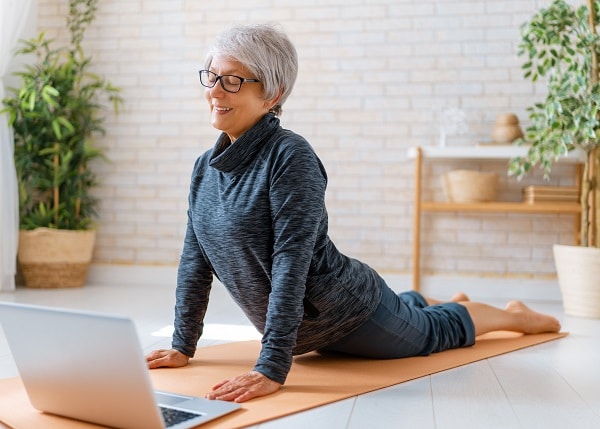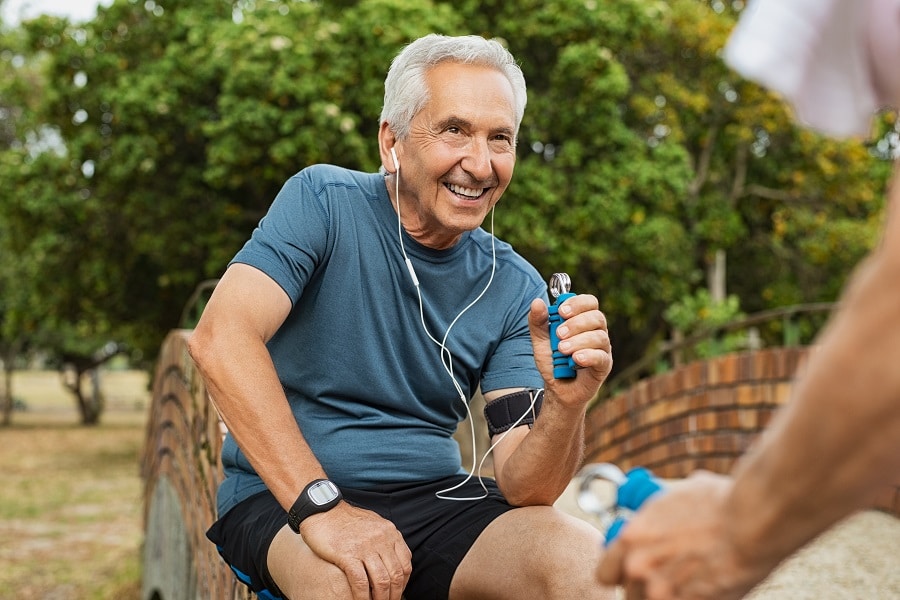Exercise and a balanced diet are two essential elements of a healthy life. As you age and your body’s requirements change, the two aspects become even more critical. While aging is associated with reduced mobility and flexibility, shrinking muscle mass, brittle bones, and aching joints, there is growing evidence that supports the role of exercise in slowing down and even reversing the signs of aging.
So, if you just turned 70 and feel that now is the time to sit back, relax, and enjoy the well-deserved break from work, think again. The more you move today, the better quality of life you are likely to enjoy in years to come.
In this post, we share exercise routines that are best for the elderly aging 70 and above. But before we get started, here is a quick reinforcement of why exercise is essential for people of all ages, particularly the elderly.
Contents
- Why is Exercise Important for the Elderly?
- Exercise Boosts Energy and Enhance Mood
- Improves Mobility and Flexibility Means Lesser Dependence
- Reduces Risk of Injury due to fall
- Enhances Cognitive Function
- Prevents Disease and Can Increase Life Span
- Cardio Exercises
- Strength Training
- Stretching for Improving Flexibility
- Improving Balance and Muscle Coordination
- Frequency of Exercise and General Guidelines
- Age is Just a Number
- Related
Why is Exercise Important for the Elderly?
Exercise offers excellent physical and mental health benefits to people of all ages. But some of the benefits of regular exercise that the elderly can enjoy include the following.
Exercise Boosts Energy and Enhance Mood

Being active means you have more energy, and you are in a better mood. When you exercise, your body releases endorphins, hormones that help you fight stress, make you feel more relaxed, and improve overall well-being. As a result, you sleep better, and you feel better.
Improves Mobility and Flexibility Means Lesser Dependence

Dependence is perhaps the most undesirable aspect of aging. But you can significantly reduce age-related dependence through regular exercise. It helps improve mobility and flexibility, so you are more likely to perform everyday tasks independently.
Reduces Risk of Injury due to fall

Fall-related injuries are one of the top reasons why older adults visit and are admitted to the ER. Aging can affect your body balance and muscle coordination, but you can significantly reduce the risk of falls when you exercise regularly.
Enhances Cognitive Function

Seniors who incorporate regular exercise in their routines are more likely to have a healthy body and a healthy mind. Research indicates that regular exercise enhances brain function among the elderly and reduces the risk of age-related brain conditions such as Alzheimer’s disease and dementia.
Prevents Disease and Can Increase Life Span

Exercise can help fight several health conditions, such as Type 2 diabetes and cardiovascular diseases. But surprisingly, it can also increase lifespan.
So why not get moving and live an active and healthy life at the age of 70 and beyond.
Exercise offers excellent benefits to people of all ages, particularly for the elderly and most people are aware of it. However, most of the seniors are unaware of what type of exercises are suitable for them. Here is the best exercise routine that you can incorporate, whether you turn 70, 80, or 90.
Cardio Exercises

Cardio exercises are excellent for people of all ages, but they offer the most benefits to the elderly. By incorporating cardio exercises, older adults can strengthen their heart and lungs and enjoy a boost of energy that most other types of workouts fail to offer. By incorporating cardio workouts, you can also manage your symptoms of anxiety and depression and reduce the risk of chronic health conditions such as diabetes. Moreover, cardio is a great way to manage your weight and make you feel young and energetic.
Some of the cardio exercises that you can incorporate into your routine include:
- Walking
- Cycling
- Swimming
While we have highlighted the generalized benefits of cardio exercises, it is always best to discuss the duration and frequency of these exercises with your general practitioner. Older adults may have health conditions that may limit their ability to perform cardio exercises.
Strength Training

Most adults over the age of 50 start losing their muscle mass. And as they age, the loss becomes more profound. Apart from immobility, loss of muscle mass is another significant reason for age-related dependence. But you can effectively counter by incorporating safe strength training exercises in your routine.
Like cardio, strength training also offers various advantages, including improved muscle strength and balance and reduced risk of injury. You can perform strength training with or without equipment. Some of the safest strength training exercises you can add to your workout include:
- Squats
- Push-ups
- Hip-Hinges
If you are relatively active and healthy, you can also add pilates to your strength training workout. But as if with all types of activities, it is best to get a head start from your healthcare provider before adding a new workout to your exercise routine.
Stretching for Improving Flexibility

Immobility and inflexibility is the real challenge associated with aging. But you can regain your flexibility by trying some of the following stretching exercises.
- Shoulder stretch,
- Hip and lower backstretch, and
- Upper-body stretch.
You can quickly try stretching at home, but it is best to incorporate water aerobics and chair yoga to improve your entire body’s flexibility if you have access to a professional.
Improving Balance and Muscle Coordination

Let’s not forget that one of the goals of regular exercise during the golden years of your life is to improve balance and muscle coordination. You can practice balancing exercises, such as:
- Toe stand
- Heel-toe walk
- Side leg raise and
- Hip extensions
Frequency of Exercise and General Guidelines

Physical activity is recommended for people of all ages, but general workout guidelines for older adults are
- Participate in strength training and exercises for improving flexibility and balance at least twice a week.
- Aim for 30 minutes of moderate cardio exercises (such as walking, swimming, or cycling) on most days of the week.
- Or 75 minutes of high-intensity workout if you are fit and active.
- Try and keep periods of inactivity to a bare minimum.
Again these are general guidelines. Don’t forget to discuss with your general practitioner before getting started with any workout.
Age is Just a Number
Regardless of age, exercise is best for everyone. Whether you are 70, 80, 90, or beyond, stick to a workout plan that you enjoy. No matter where you work out, aim for exercises that strengthen your muscles, improve your flexibility and balance, and keep your heart healthy.
Remember that your top priority is to maintain independence and your quality of life as you age. You can only do so by incorporating a holistic workout plan into your everyday life.


